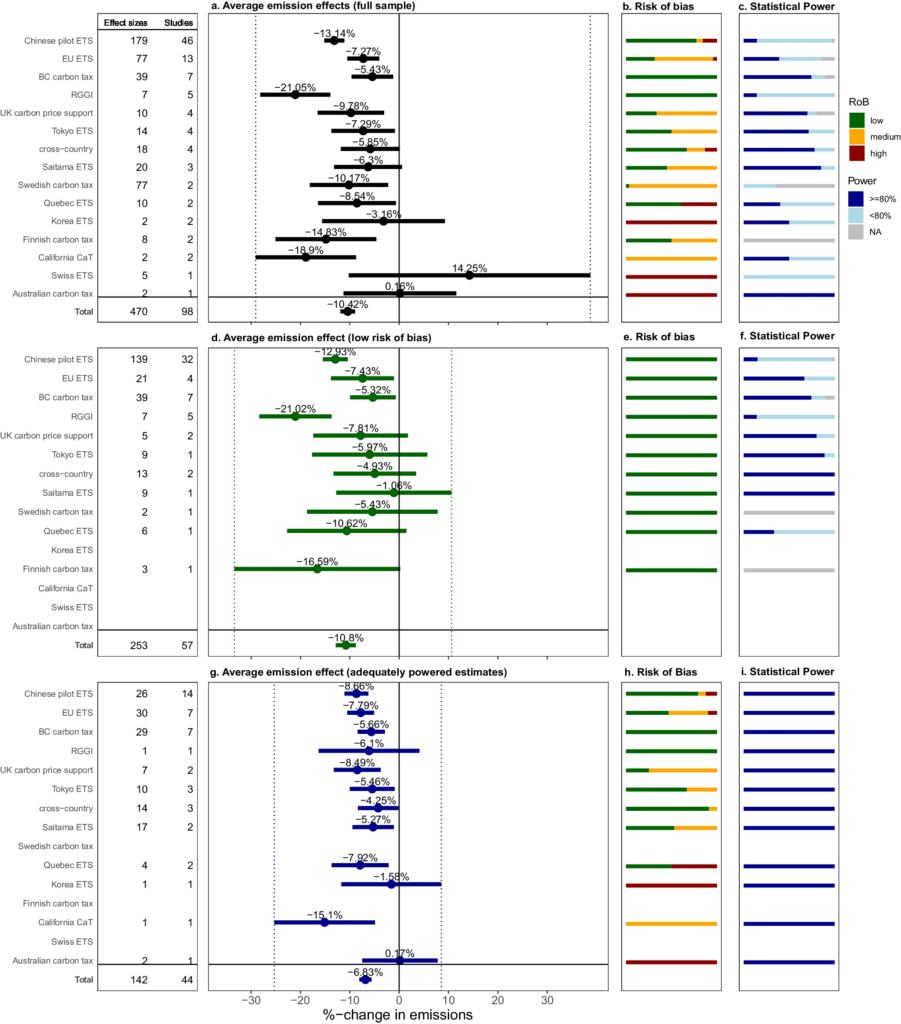
effectiveness of different carbon pricing schemes
Today, more than 70 carbon pricing schemes have been implemented around the globe, but their contributions to emissions reductions remains a subject of heated debate in science and policy.
In a new paper published in Nature Communication, a group of researcher assesses the effectiveness of carbon pricing in reducing emissions using a rigorous, machine-learning assisted systematic review and meta-analysis.
Based on 483 effect sizes extracted from 80 causal ex-post evaluations across 21 carbon pricing schemes, they find that introducing a carbon price has yielded immediate and substantial emission reductions for at least 17 of these policies, despite the low level of prices in most instances. Statistically significant emissions reductions range between –5% to –21% across the schemes (–4% to –15% after correcting for publication bias).
The study highlights critical evidence gaps with regard to dozens of unevaluated carbon pricing schemes and the price elasticity of emissions reductions. More rigorous synthesis of carbon pricing and other climate policies is required across a range of outcomes to advance our understanding of “what works” and accelerate learning on climate solutions in science and policy.
Read the paper
Döbbeling-Hildebrandt, N., Miersch, K., Khanna, T.M. et al. Systematic review and meta-analysis of ex-post evaluations on the effectiveness of carbon pricing. Nat Commun 15, 4147 (2024). https://doi.org/10.1038/s41467-024-48512-w
OVERVIEW OF MAIN RESULTS










Leave a Reply